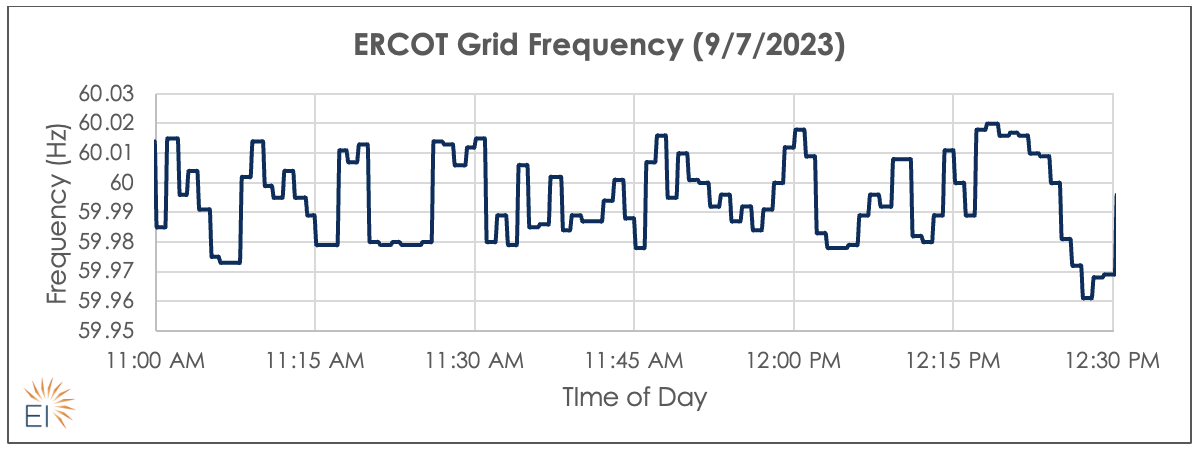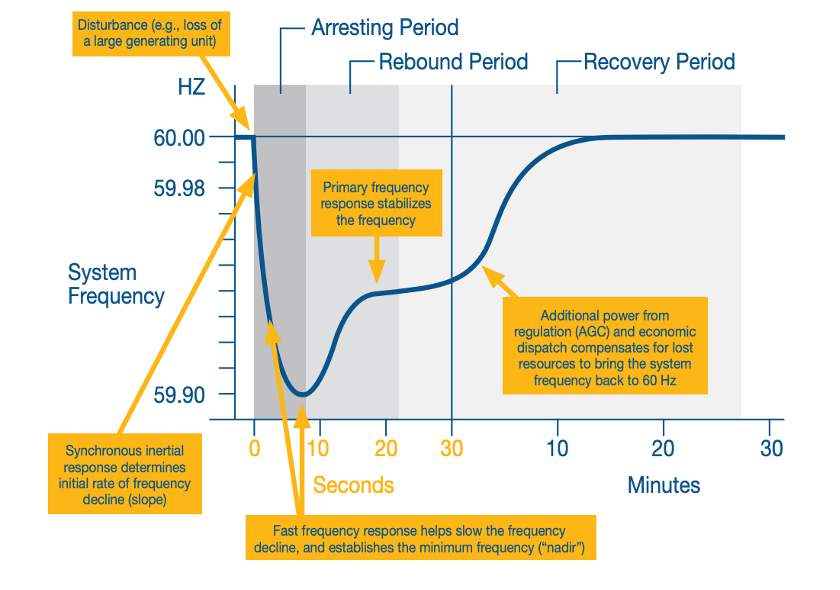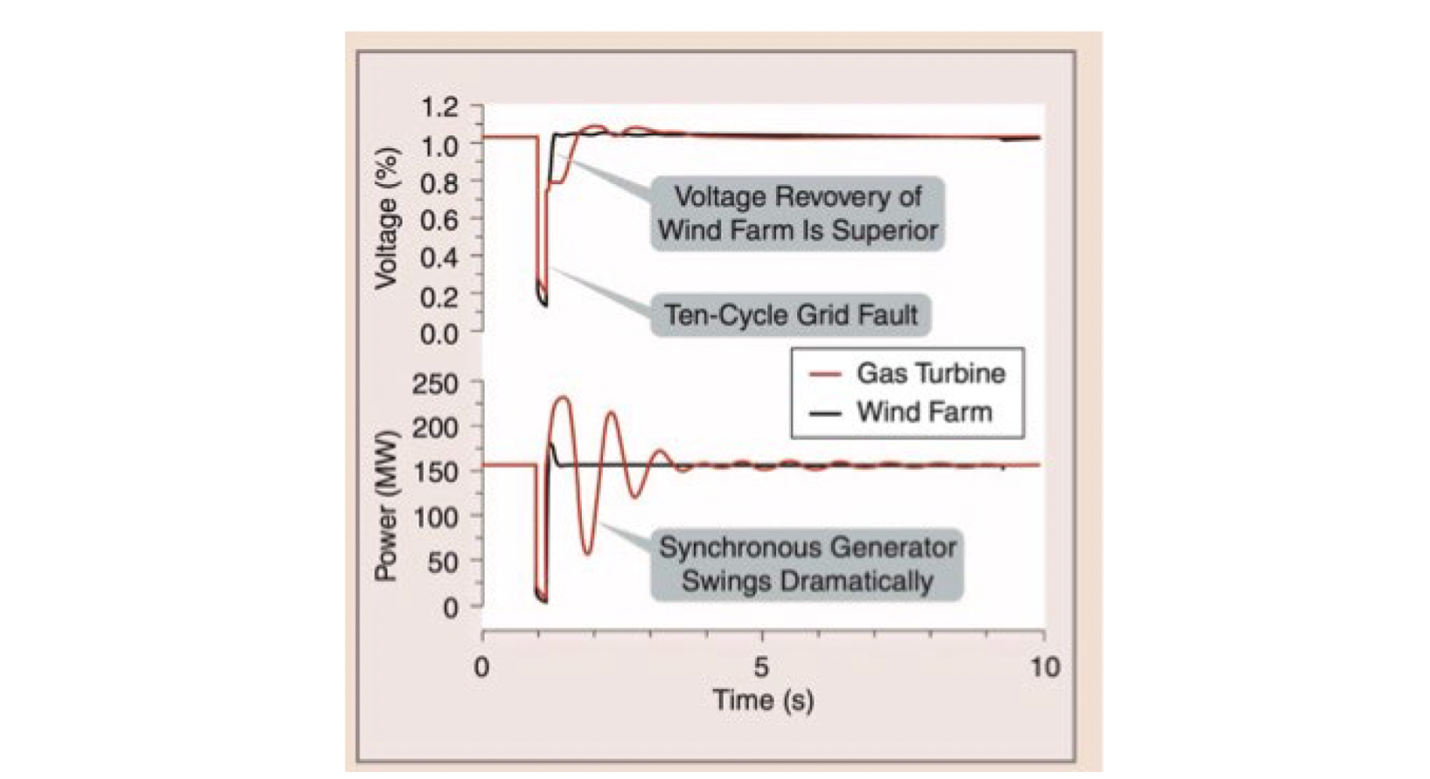This post is the second in a series titled “Real Talk on Reliability,” which will examine the reliability needs of our grid as we move toward 100 percent clean electricity and electrify more end-uses on the path to a climate stable future. It was written by Sara Baldwin, senior director of the Electrification Program at Energy Innovation, with featured contributor Dr. Michael Milligan. A shorter version of this article was published in Utility Dive. Other posts in this series covered Rethinking the Reliability of the Grid
In 2000, the electricity grid earned the distinction as the top engineering achievement of the twentieth century by the National Academy of Engineering. Even with this badge of honor, the grid needs help as the country transitions from relying on fossil fuels to clean electricity. While a clean energy future is necessary, it comes with its own challenges as aging fossil fuel plants retire and new resources come online. Just as the introduction of the first smart phone prompted skepticism about its future in a world dominated by landlines, so do these new resources. This is especially true when it comes to their ability (and incentives) to provide essential reliability services (ERS).
The transformation to new, clean energy resources is already underway, and reliability considerations must change apace. Luckily, these new resources are more than capable of providing ERS. Now, grid operators must gain confidence that the reliability services from these clean, renewable resources are available when needed, and regulations and market signals must align with these needs.
The Reliable Operation of the Grid is Apple Pie, Reliability Services Are the Slices
Grid reliability during real-time operation is determined in large part by the deployment of reliability services, or grid services, which depend on the attributes and responsive characteristics of different energy resources. If reliable operation of the grid is apple pie, reliability services represent the slices of the pie.
The electricity grid is subject to the laws of physics, which means electricity supply and demand must always be kept in balance to maintain relatively constant frequency and voltage. During normal operations, relatively small changes occurring in each moment must be matched by corresponding changes in resource output to maintain balance.
If the supply-demand imbalance becomes too large, this imbalance could lead to emergency grid operations. In the extreme, something more severe, including rolling outages or damage to equipment or appliances, could occur. Think of a cup of water filled to the brim or a tightrope walker maintaining equilibrium at great heights. In either case, any amount of disturbance beyond a nominal amount will result in a spill. Such is the grid.

Much like the ingredients in an apple pie recipe, every machine, technology, and software operating to supply electricity has different characteristics that enable them to respond to the laws of physics and provide different contributions to grid reliability. Importantly, not every resource must provide all types of reliability services, but the entire pie, or portfolio, must be able to respond appropriately to bring the grid back to balance and resume “normal” operating conditions.
To maintain stability, each grid service available in the portfolio acts in a particular time frame. For example, fast frequency response occurs in the seconds immediately following a disturbance to slow decline, and is followed by primary frequency response, which stabilizes frequency. Economic dispatch, which as the name suggests is grounded in economics, typically operates at a five-minute time step, and longer time steps are typically managed by automatic or manual dispatch through market mechanisms. The entire portfolio must have some level of flexibility to provide all of these in a changing environment.
When more major disturbances occur, the pie must have sufficient disturbance ride-through capabilities to maintain frequency and voltage to keep resources on-line through moments of instability. In the case of a generator tripping offline the grid’s entire portfolio must be capable of providing reliability services to avoid a more severe cascading effect, illustrated in the image below.

Similarly, the voltage of the grid must be maintained at nominal levels continuously and be able to respond in response to a disturbance. Maintaining stable voltage is critical to keeping the lights on and avoiding equipment damage, and it requires a different set of capabilities, such as reactive power control, allowing for voltage control in the alternating current (AC) network.
Ma Bell, Meet Smart Phone
Grid operators traditionally obtained reliability services from large thermal units and rotating machines (e.g., coal-fired, nuclear, and hydro-electric power plants) because the physical attributes of those machines provided the grid services needed. Their large, spinning mass provides inertia, which helps contribute to grid stability as supply and demand fluctuate. Coal plants are designed to be synchronized with the grid, so if the frequency drops, the rotating inertia of the coal plant will provide upward “pressure” on the frequency drop, but it will gradually slow down (like taking your foot off the accelerator in your car). This “coasting” bolsters the grid frequency so that other resources can respond, bringing the frequency back up to the right level (in slightly longer time frames). Inertia on its own is not capable of restoring frequency but does help to stabilize it.
The imminent retirement of dozens of coal plants, which have historically provided inertial response during a grid disturbance, is prompting new questions about the ability of renewables and storage to provide this inertia.
Such a task is not as straightforward. Grid reliability expert and former NREL Principal Researcher at the Electric Systems Integration Facility Dr. Michael Milligan explains that “new resources behave differently than incumbent resources.” For example, IBRs can provide nearly instantaneous fast frequency response (FFR), which results in a steeper slope of the initial decline, but frequency can be arrested much sooner than in the traditional case. Therefore, the decline in inertia caused by large thermal retirements and replacement by IBRs does not necessarily pose a problem for the grid; but ongoing studies evaluate these tradeoffs.
Renewable energy, such as solar and wind, for example, connect to the grid via inverters which convert the direct current (DC) they generate to AC flow of the grid. Unlike their rotating machine predecessors (also called synchronous resources), these are asynchronously connected to the grid and either partially or completely interface through power electronics. They can be programmed via their inverter and digital software to provide reliability services, but not always in the same way. Also known as inverter-based resources, or IBRs, they ramp up and down much more quickly than a conventional power plant, making them more responsive to changing grid conditions. During the hottest summer on record, states and electric grids with more renewables and energy storage have fared well. These resources have helped balance the grid during times of spiking demand for cooling combined with the stresses of extreme temperatures on grid infrastructure. Nonetheless, while “there is an emerging recognition that inverter-based resources can provide certain grid services,” says Milligan, “greater awareness is needed [on how].”
Fortunately, we’re learning that even in the absence of most or all inertial response, IBRs can respond nearly immediately after the triggering event. With sufficient IBRs, the frequency drop can be arrested more quickly, and the IBRs can even act quickly to help restore the nominal frequency. However, the technical characteristics and benefits of this fast frequency response are not as well understood as the traditional incumbents, and doubt remains that IBRs will provide fast frequency response. More collaborative research and investigation into these capabilities is warranted now, before the retirements occur. One such study compared the grid services from a wind plant, a gas plant, and a coal plant and found that wind could provide certain services faster. See illustrative example in figure below.

In addition, there must be a greater focus on strategies to integrate renewables into markets and compensate them in such a way that reflects their ability to respond. For example, renewable energy developers may be disinclined to program their resources to ride through a voltage event if such a setting could compromise their asset. Going forward, utilities and grid operators should be working to quantify and understand how IBRs can respond during a grid emergency—in some cases the IBRs may be capable of providing a superior response, but they must be sufficiently compensated for doing so.
Batteries, one of the fastest growing new resources, are untapped sources of reliability services. New advanced controls allow batteries to provide stability that has traditionally delivered by conventional synchronous generators (known as grid forming). As these new battery resources come online, there is a ripe opportunity for evaluating their performance. In fact, batteries are already showing their value – a recent grid reliability event in Texas saw a large frequency decline that risked outages stabilized by largely by energy storage. Demand-side technologies also represent an untapped source of ERS.
Addressing Uncertainties About Clean Energy Technologies
Yet, while IBRs are moving quickly to adapt their programming to enhance their grid performance, some recent incidents with IBRs have raised concerns among reliability experts. For example, ERCO has seen large amounts of solar and wind trip offline in response to a grid fault. The largest of them, the Odessa Disturbance 2 incident in June 2021 involved 14 solar facilities and resulting in the loss of over 1.5 gigawatts of solar power.
While these incidents are uncommon, they spotlight the need for appropriate responses to avoid their occurrence in the future. ERCOT has established an IBR working group make recommended improvements and mitigate future potential risks. The North American Electric Reliability Council (NERC) has formed an IBR performance task force working to address innovative solutions. Another notable collaborative network for research and emerging practices is the Energy Systems Integration Group, as well as numerous efforts being spearheaded by the U.S. Department of Energy and various national laboratories.
Early efforts to achieve consensus around technical performance and any accompanying standards will aid grid operators eager for near-term solutions and new approaches.
Operating a reliable grid requires institutional reforms
Numerous factors impact reliability that must evolve apace of the technologies themselves. For example, energy market rules and economic incentives (often subject to government policies and regulatory requirements), dictate how the energy resources and technologies can (and will) operate on the grid. Ideally, a combination of carrots and sticks can effectively influence grid reliability and performance. They should reflect the real-world operating characteristics of various technologies, allowing and encouraging resources to “show up” with the requisite grid services and in the quantities required by the laws of physics.
Similarly, grid operators, working diligently to ensure the technologies available today are ready and available to provide the necessary grid services, have a role to play in facilitating needed changes: whether through programming a device or piece of equipment, or ensuring the settings allow for certain characteristics to be made available. Shifting how the grid is operated requires more awareness of the dynamic capabilities of IBRs, and appropriate rules and market signals to call on those capabilities during times of need. As IBRs replace traditional resources, inadequate market mechanisms may result in fewer grid services, which could result in a combination of higher prices or strain grid reliability.
Those tasked with grid planning must evaluate the full potential of new resources to ensure the grid of the future can provide needed services based on new and emerging technologies. Such plans should evaluate the real and potential risks (including those caused by climate change-induced extreme weather). In the face of so many emerging and pervasive threats, grid planning is taking on a new level of importance. “If you can’t plan a reliable system, you can’t possibly operate a reliable system,” says Dr. Milligan.
And, as utilities and grid operators deal with mounting challenges in the face of more intense storms, solutions should aim to “make the grid larger than the storm,” says Milligan. This could include more transmission between grid market regions, better coordination between grid systems on emergency response, and planning, and working to ensure market rules sufficiently incentivize IBRs from providing grid services. Investments in grid hardening will also play a role in adaptation to climate change.
A New Recipe for the Pie, Aligned with the Laws of Physics
If essential reliability services are the slices of the pie, it means that adapting to changes already requires an update to the recipe. IBRs can provide much – and perhaps all – of what we need, but new approaches and thinking are needed. Beyond efforts to understand and embrace new technological capabilities, we need to also be asking better questions, such as “how can fast frequency response replace inertia? How do we incentivize resources to provide needed services? Will market designs prevent or inhibit these incentives?” says Milligan. Collaborative research can help, but acceptance of findings and adoption of new approaches can facilitate an expedited evolution.